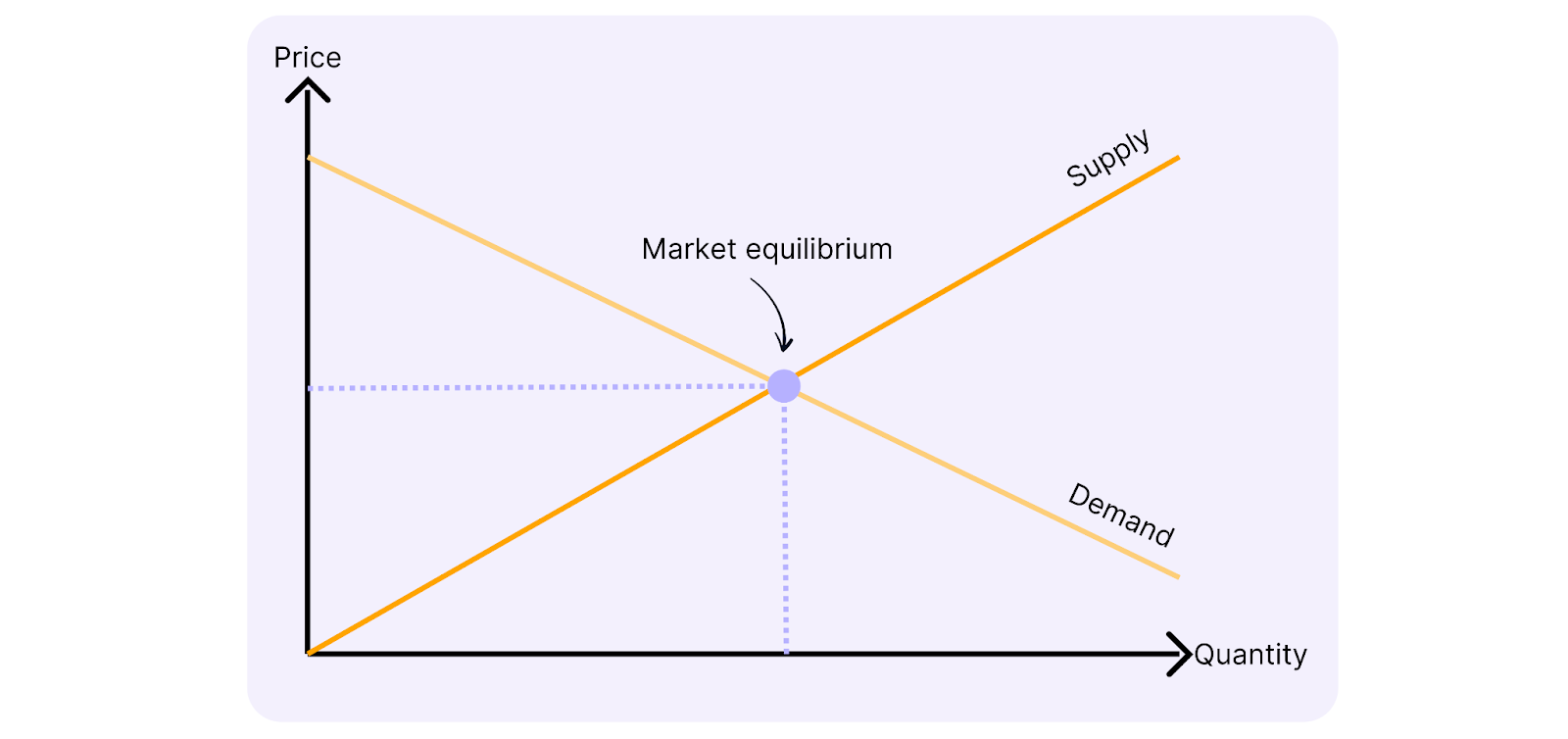Supply and demand are economic concepts that directly influence pricing and competition. The law of supply and demand states that the availability of a product (supply) and the desire for it (demand) determine its price. When demand is high and supply is low, prices rise – and vice versa. This knowledge is not only theoretically important, but also plays a crucial role in consulting projects, particularly when developing market strategies.
Let’s take a closer look at supply and demand in case interviews! ✨
Market Equilibrium and Its Significance
In an ideal market, there are many buyers and sellers, all with access to the same information. If supply exceeds demand, a surplus occurs, forcing sellers to lower their prices. This price competition may cause some companies to exit the market, restoring equilibrium. Conversely, high demand with limited supply drives prices up, attracting new competitors.
Understanding market equilibrium is critical for companies, as they often face pressure to keep their prices competitive in such scenarios. ⚖️

When you understand the dynamics of supply and demand, you can make informed decisions and offer strategic recommendations.
💡 For more insights on market strategies, check out our articles in the Case Interview Basics like market entry and market sizing!

